뉴스&스피킹(영자신문)
하루 10분이면 영어에 대한 두려움을 극복하고 누구나 유창하게 영어를 구사하실 수 있습니다.
-
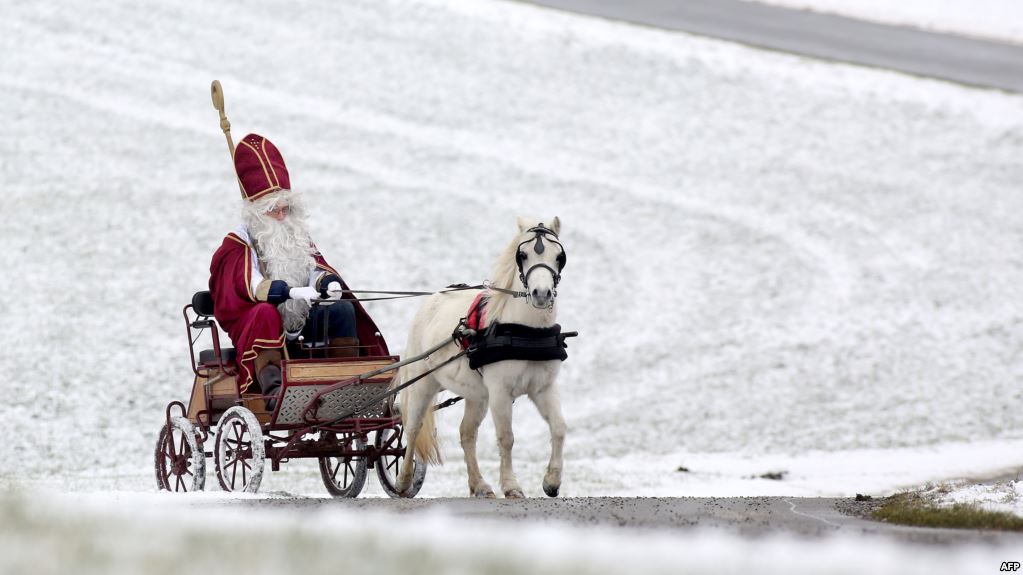 Santa Claus Is Coming to Town! Now, Words and Their Stories from VOA Learning English.
Santa Claus Is Coming to Town! Now, Words and Their Stories from VOA Learning English.
This week, we have a special program for the holiday season. It is a show recorded many years ago by Maurice Joyce. He worked as an announcer at the Voice of America, and presented Words and Their Stories among other programs in Special English.
Today he tells about a popular personality at this time of year: Santa Claus!
We hope you enjoy this blast from the past. Here is Maurice Joyce.
Santa Claus is someone who will remain in the hearts of children forever. He is the make-believe person who brings toys and other gifts to children at Christmas.
To grown-ups, he is a special symbol of goodwill and selfless giving. Santa Claus also has some other names: Saint Nicholas, St. Nick, Kris Kringle, Pelznickel.
Two of his names -- Santa Claus and Saint Nicholas -- both come from the Dutch who settled in New York long ago. The Dutch believed Saint Nikolas gave gifts to children. They honored this kindly saint with a yearly festival on December sixth.
The English-speaking people who lived nearby greatly enjoyed Dutch festivals. And they brought the saint and the custom of giving gifts into their own celebration at Christmas time. The Dutch spoke the name "Saint Nikolaas" very fast. It sounded like "sinterklaas." And so, when the English said this word, it sounded like Santa Claus.
West of New York, in Pennsylvania, many German farmers had also heard of Saint Nikolas. But they called him Pelznickel. This word came from "pelz," meaning fur, and "nickel" for Nicholas. And so, to the Germans of Pennsylvania, Saint Nicholas or Pelznickel was a man dressed in fur who came once a year with gifts for good children.
Soon, people began to feel that the love and kindness Pelznickel brought should be part of a celebration honoring the Christkindl, as the Germans called the Christ child. After a time, this became Kris Kringle. Later, Kris Kringle became another name for Santa Claus himself.
Whatever he is called, he is still the same short, fat, jolly old man with a long beard, wearing a red suit with white fur.
The picture of Santa Claus as we see him came from Thomas Nast. He was an American painter born in Bavaria. He painted pictures for Christmas poems. Someone asked him to paint a picture of Santa Claus. Nast remembered when he was a little boy in southern Germany. Every Christmas, a fat old man gave toys and cakesto the children. So, when Nast painted the picture, his Santa Claus looked like the kindly old man of his childhood.
And through the years, Nast's painting has remained as the most popular picture of Santa Claus.
Santa can be seen almost everywhere in large American cities during the Christmas season. Some stand on street corners asking for money to buy food and gifts for the needy. Others are found in stores and shopping centers. It is easy to find them by the long lines of children waiting to tell Santa what they want for Christmas.
And that is our special Words and Their Stories for Christmas. I’m Anna Matteo, wishing you and your loved ones a very happy holiday season!
The song at the beginning of the show is the 1949 version of "Sleigh Bells by the Boston Pops Orchestra. At the end of the program, Elvis Presley sings "Here Comes Santa Claus."View -
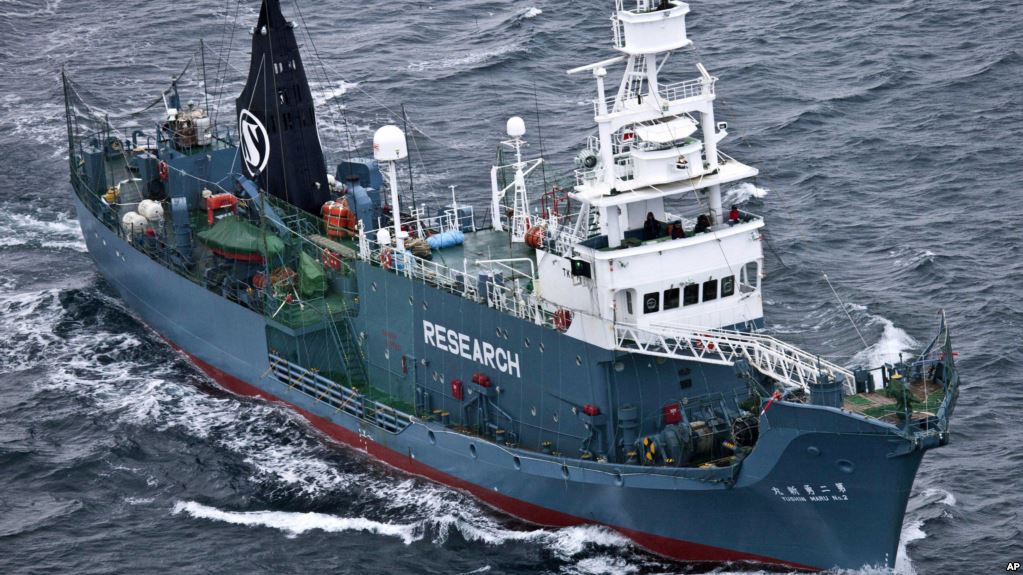 Japan to Restart Commercial Whale Hunts in 2019 Japan says it plans to restart commercial hunts for whales in July of 2019.
Japan to Restart Commercial Whale Hunts in 2019 Japan says it plans to restart commercial hunts for whales in July of 2019.
Japan’s Chief Cabinet Secretary, Yoshihide Suga, made the announcement on Wednesday. He also said that his country would withdraw from the International Whaling Commission (IWC). The international agency, based in Britain, was set up to provide for the protection of whales and the orderly development of the whaling industry.
Suga said that Japan would restart commercial whaling in keeping with “Japan’s basic policy of promoting sustainable use” of sea life based on scientific evidence.
He added that Japan is unhappy with the commission. The IWC is based on a treaty designed to represent both environmental concerns and whaling nations. But, he said, environmentalists have the most influence.
The chief cabinet secretary also announced that Japanese crews would no longer go to the Antarctic and northern Pacific oceans to hunt whales as it did in the past.
Instead, he said, Japanese whale hunts would be limited to the country’s territorial waters and exclusive economic zone. That area extends 323 kilometers from the coast of the island nation.
Japan’s Fisheries Agency said it planned to permit the catch of three kinds of whales: minke, sei whales and Bryde’s whales. It said that numbers of species have recovered enough to permit whaling.
The IWC ordered the ban on commercial whaling over 30 years ago. The move sought to increase the animals’ numbers in the world’s oceans.
Japan continued whaling for scientific research under the IWC rules. Environmentalists criticized the hunts, saying they were commercial because whale meat was sold in Japan.
Japanese officials say the country will remain as an observer to the IWC and will take part in the group’s scientific meetings and conferences.
The environmental group Greenpeace disputed Japan’s position that whale numbers had recovered. Sam Annesley, head of Greenpeace Japan, said the Japanese announcement was, in his words, “out of step with the international community.” He called on the country to preserve sea life.
The Australian government said it was “extremely disappointed” about Japan’s decision to withdraw from the IWC. However, Australia and New Zealand’s Foreign Minister Winston Peters welcomed Japan’s halt to Antarctic whaling.
In 2014, Japan cut back on whale hunting after the International Court of Justice ruled against its Antarctic whale hunting program. Japan currently hunts about 600 whales each year in the Antarctic Ocean.
Suga said Japan would officially inform the IWC of its decision by the end of 2018.
I’m Anna Mateo.View -
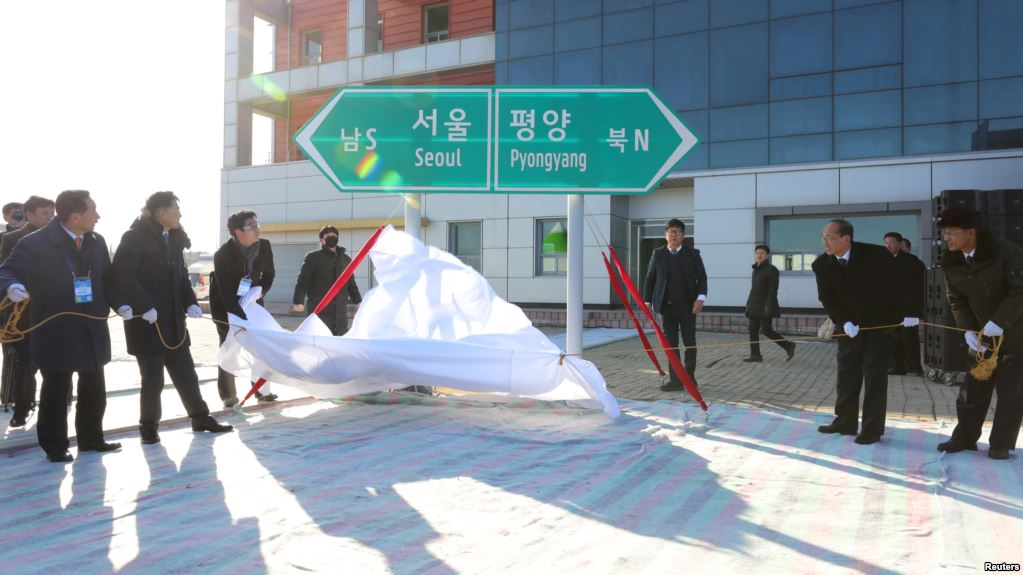 North, South Korean Officials Celebrate Joint Railway Project North and South Korea have held a ceremony to mark the beginning of a project to improve North Korea’s railways and connect them with the South.
North, South Korean Officials Celebrate Joint Railway Project North and South Korea have held a ceremony to mark the beginning of a project to improve North Korea’s railways and connect them with the South.
Each side sent representatives to the ceremony, in the border town of Kaesong.
Last month, the two Koreas carried out a joint inspection of parts of the North’s railway system, which they hope to connect someday with the South. The goal is to link the countries’ railroads and thereby increase economic ties.
The move is one of several efforts agreed to by North Korean leader Kim Jong Un and the president of South Korea, Moon Jae-in.
Progress linked to nuclear talks
Any progress on the project, however, will require changes to United States-led economic actions against North Korea. They are designed to punish the North Korean government for its nuclear activities.
The railway inspection had been delayed for months because of concerns about United Nations sanctions on the North. The U.N. Security Council gave the two Koreas special permission for the study.
North Korea has voiced displeasure with the slow progress on projects aimed at building ties between the two sides. South Korea hopes to carry out additional inspections before further details of the project are released. Work depends on progress in nuclear talks with the North.
The United States and its allies have called for restrictions to remain in place until North Korea takes clear steps toward giving up its nuclear weapons and missiles.
For the ground-breaking ceremony on Wednesday, a South Korean train traveled to Kaesong. It was carrying about 100 people, including government officials and lawmakers. Members of families displaced by the Korean War in the early 1950s also were on the train.
South Korea’s unification ministry reported that officials from the United Nations, China, Russia and Mongolia joined the North Korean delegation.
After the event, North and South Korea agreed to carry out additional railway inspections. Both Koreas said they would work closely with the United States and the U.N. to gain support for the project and deal with concerns over sanctions.
Lee Eugene, a spokeswoman for the unification ministry, spoke with reporters. “We plan to hold detailed negotiations with the North to coordinate the specific levels we want to achieve in the modernization of railways and roads and how to carry out the project,” she said.
However, experts say investment in the project could take time even with steps toward nuclear weapons removal and easing of restrictions.
Jung Dae-jin is a professor with the Ajou Institute of Unification in South Korea. He noted that the project would increase exchanges between the two governments.
But he said the future of Moon’s plans for connecting the railways rests with North Korea.
“We need to see the New Year’s address by Kim Jong Un,” Jung said. He added that the global community needs to see measures taken by the North toward removing nuclear weapons for progress on railways to go forward.
I’m Mario Ritter, Jr.View -
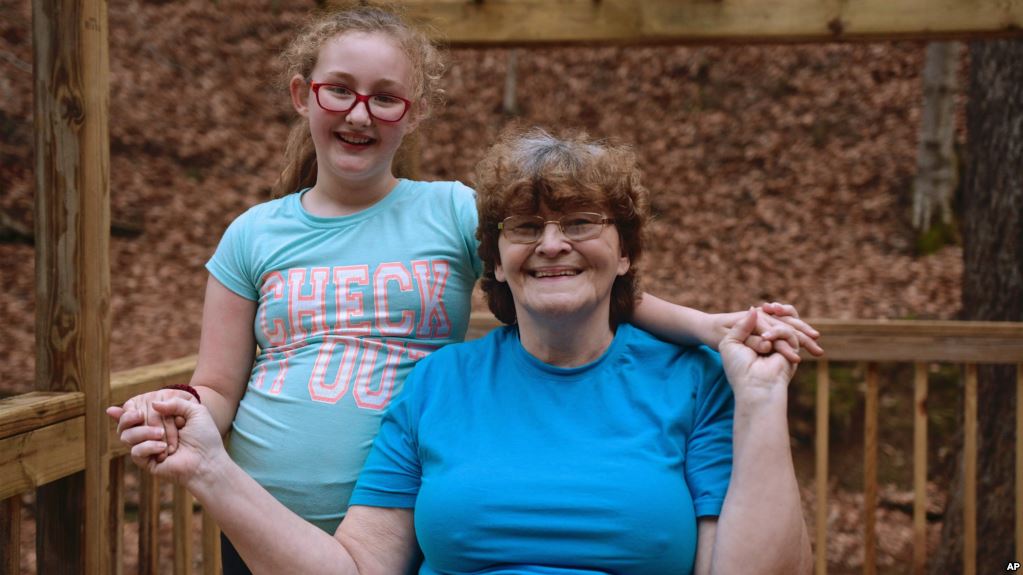 Why Is Life Expectancy Falling in US? Suicides and drug overdoses are two reasons for a continuing decrease in how long Americans are expected to live.
Why Is Life Expectancy Falling in US? Suicides and drug overdoses are two reasons for a continuing decrease in how long Americans are expected to live.
The Centers for Disease Control and Prevention reported recently that there were more than 2.8 million deaths in the United States in 2017. Of those, 47,000 were suicides and 70,000 were drug overdoses.
If you want to understand why life expectancy is decreasing in America, the state of West Virginia may offer some answers.
A West Virginian story
Maggie Hill has lived in West Virginia for all of her life. Hill, who is 67, told the Associated Press about the many deaths in her family. An older brother drowned in a flood. A sister died in a house fire. Two siblings, both who smoked, died of lung cancer. Two others died at birth. Her first husband died of heart failure.
Then there were the suicides. Two of her three sons shot themselves to death. Her second husband killed himself one Sunday morning while she was still in bed.
“I don’t think people have a lot to live for,” hill said. “I really and truly don’t see things getting better.”
Life expectancy
Dr. Michael Brumage is a public health expert at West Virginia University. He used to run the health department in Charleston, West Virginia. He said, “It seems that the worst outcomes happen here first.”
Among the 50 American states, West Virginia has the second- lowest life expectancy, behind only Mississippi. Hawaii has the highest life expectancy.
The nationwide drug overdose death rate today is what West Virginia’s was 10 years ago. In fact, West Virginia has had the nation’s highest rate of drug overdose deaths for several years.
The nation’s suicide rate today is where West Virginia’s was nearly 20 years ago.
West Virginia also has more people affected by diabetes, heart disease and obesitythan most other American states.
Ten years ago, the AP described the West Virginia city of Huntington as the unhealthiest place in America. The finding was based on health information from the Centers for Disease Control and Prevention. The report led the city and the wider area to make changes to food served at schools. The area also made improvements to parks and sidewalks in an effort to fight obesity and related health problems.
As the city was trying to deal with its citizens’ weight problems, a new health crisis came to Huntington: opioid addiction.
One summer day in 2016, emergency workers in Huntington treated 28 overdoses in six hours — including two deaths. The city later became known as America’s overdose capital.
There is hope
There are several new projects around the state that aim to get children to exercise and eat healthier foods.
Kayla Wright is director of an organization called Try This West Virginia. The organization is paying for many of the projects. She said, “We want to give people hope that we can be knocked off the unhealthiest list” of states. One program paid for high school students to build a running trail. Another helped people learn to grow a garden.
In Williamson County, local leaders — led by a young doctor named C. Donovan Beckett — developed a series of programs aimed at creating a culture of health.
They opened the Williamson Health and Wellness Center for free medical care. They set up a community garden, a vegetable delivery service and a running club. In the coming year, there will be a federally funded treatment program for people addicted to drugs.
One of the most successful programs is one that sends health workers to the homes of people with diabetes.
Jamie Muncy is one success story.
The 48-year-old lost his job and his marriage was in ruins. Last fall, he finally stopped taking opioids. He began taking the drug after he hurt his foot.
He told the AP, “I had no motivation” to be healthy. “I didn’t care.”
His weight went from 75 kilograms to 89 kilograms. He had high blood sugar levels. A doctor from Williamson Center put him on a special diet, connected him with a physical therapist and put him in the home-visit diabetes program.
Now Muncy walks 1.6 kilometer a day and buys vegetables at the farmers’ market. The changes to his everyday life have helped him bring his weight down to 66 kilograms.
As for Maggie Hill, the lifelong West Virginian, she adopted Charity, a young girl her son had been raising. He lost his right to raise Charity because of his continued struggle with drug addiction.
Charity has given Hill’s life a sense of purpose, she said.
Charity, who is 10, is a good student and hopes to go to college. If Charity does go away to college one day, Hill says she will move there with her.
I'm Ashley Thompson.
And I'm Jonathan Evans.View -
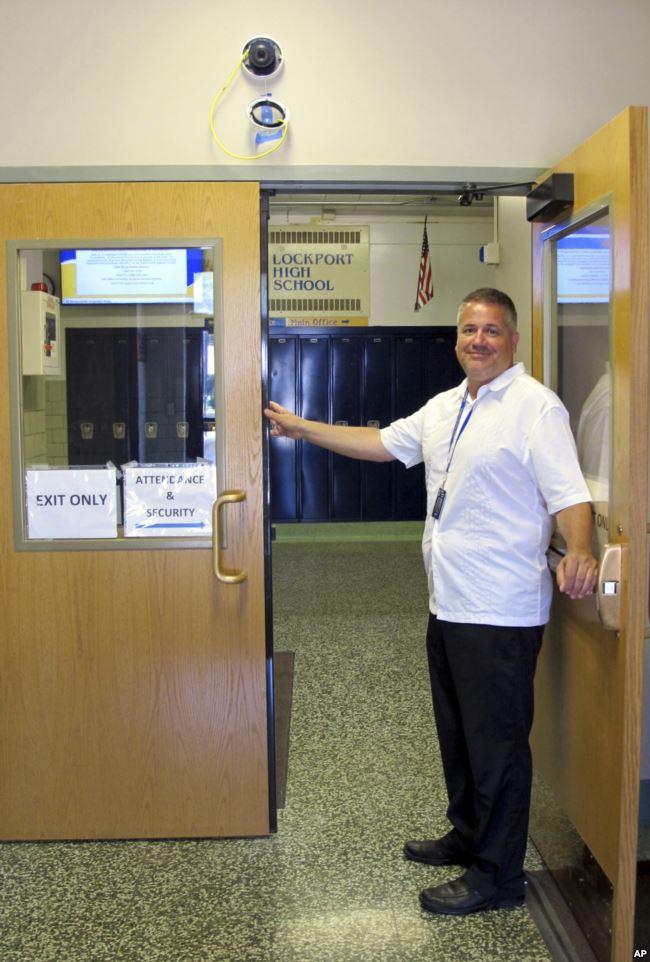 Can Facial Recognition Help Prevent School Shootings? American education officials have sought new ways to make schools more secure following several deadly shootings in recent years.
Can Facial Recognition Help Prevent School Shootings? American education officials have sought new ways to make schools more secure following several deadly shootings in recent years.
One of them took place in February at Marjory Stoneman Douglas High School in Parkland, Florida. The attack, carried out by former student Nikolas Cruz, killed 17 people.
The killings set in motion a nationwide debate over school security and gun control. Many security proposals have been discussed, including the hiring of armed guards and putting metal detectors in schools.
The principal of Marjory Stoneman Douglas High School, Ty Thompson, recently tweeted about new security measures that will take effect during the new school year beginning next month. Among the changes will be adding four security officers, the addition of metal detectors and numerous new cameras.
Some American schools plan to take camera technology a step further by adding facial recognition equipment to improve security. Such systems work by continuously searching faces for the identities of individuals whose images have already been entered.
Facial recognition technology
The Lockport City School District in western New York state has approved a facial recognition system at all its schools. District officials say the equipment will soon be in place to identify former students and employees, sex offenders and weapons. Schools in other states have also considered using the technology.
A security expert who worked with Lockport officials says such a system can prevent shootings like the one in Parkland, Florida. “This would have identified (Nikolas Cruz) as not being able to be in that building,” Tony Olivo told the Associated Press. Olivo said cameras placed throughout the school would have followed Cruz’s every move on school grounds.
The system chosen by Lockport administrators was created by Canadian-based SN Technologies. The company’s website says the facial recognition system can notify officials immediately when certain individuals are detected on school property. It is also designed to identify the most commonly used firearms.
Lockport’s director of technology is Robert LiPuma. He told the Associated Press that past violence has forced officials nationwide to decide what new security methods are needed. He said he hopes the district’s system will become a model for other schools.
A U.S.-based company recently announced it will start offering a free version of its facial recognition system to schools in the United States and Canada. The SAFR system by RealNetworks is also designed to keep people identified as possible threats from entering schools. Also, the system lets parents or others register their image so they can gain electronic entry to the school.
A question of privacy
Some critics of facial recognition technology say it should be kept out of schools. The New York Civil Liberties Union (NYCLU) has asked the state Education Department to block the technology from any New York school. Education officials have said they would review the group’s request.
In its letter to state officials, the NYCLU said the system will harm, not help students. “Rather than protecting them, the district is treating every child as a threat. Rather than human relationships, the district is relying on machines to do its job,” the letter said.
The Electronic Frontier Foundation, a digital rights group, has called on schools considering facial recognition to carefully examine how the systems will be used. It said officials must consider who will have access to collected information, how the system would be managed and whether students can decide not to take part.
Some critics have also questioned the effectiveness of facial recognition systems. A study released in February by the Massachusetts Institute of Technology (MIT) and Stanford University found that some facial recognition systems do not work as well on women or minorities.
Khari Demos is a father with two children attending Lockport High School. He said he thinks facial recognition can be an effective tool when used as part of a complete security package to keep students safe.
“It’ll actually identify who should and shouldn’t be in the school,” Demos said. “The system will never be 100 percent perfect, but it’s a step in the right direction,” he added.
I’m Bryan Lynn.View

